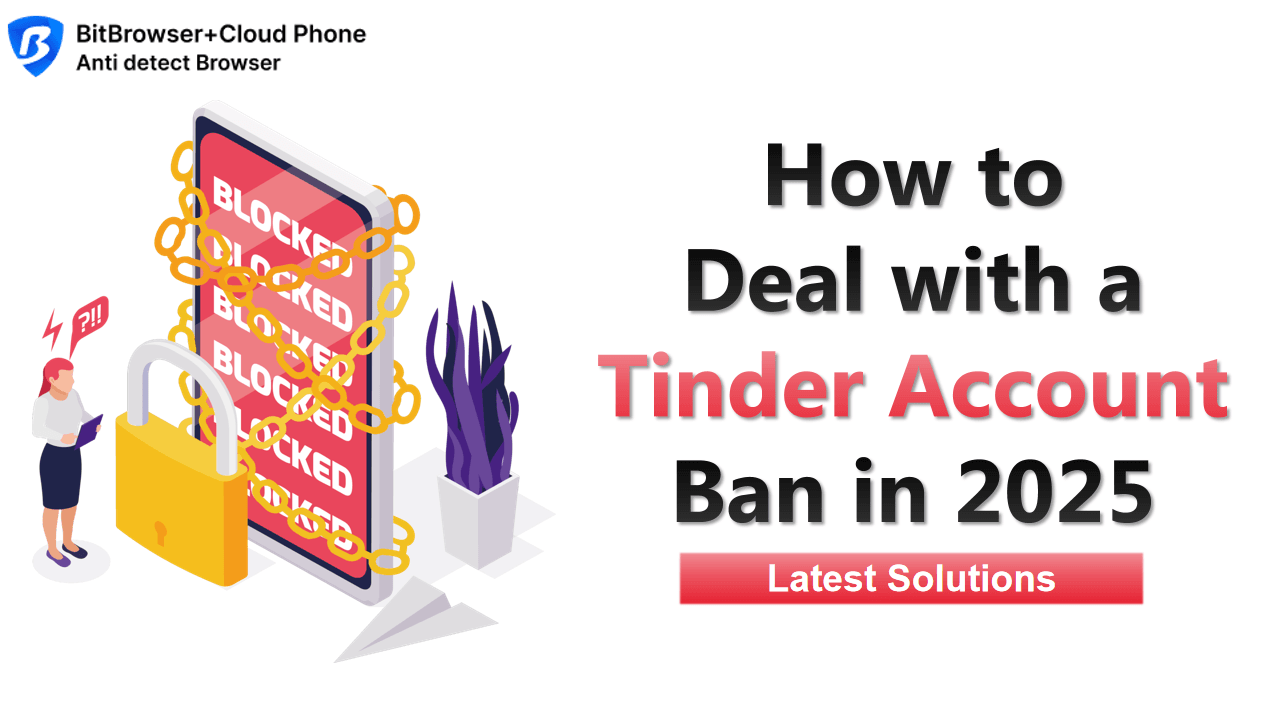
Hot Picks
How to run Facebook ads in 2025? Ideas

Hot Picks
How to promote on Amazon? Sharing various promotion methods

Hot Picks
Choose BitBrowser for fingerprint browsers, and look for the only official website: bitbrowser.cn
Use multi-login account browser to prevent e-commerce account from being suspended
Time: 2023-08-10 17:45 Click:
This is the scene every seller with an Amazon or eBay store dreads — receiving an email notification that your account has been suspended. Once that happens, the business foundation you've built crumbles. Even if you appeal and even file a detailed Plan of Action (PoA) application, getting your account back can be extremely difficult. In this article, we will explore the main reasons why accounts are blocked and share how to avoid them using the multi-login account browser.
The main reasons for e-commerce accounts being banned:
Invalid or missing products
According to the regulations of the e-commerce platform, it is very important to ensure that the product information is valid and complete. If any "list hijacking" is suspected, such as borrowing information from other products to save time, your account may be suspended. Most e-commerce platforms, including Amazon and eBay, require a unique product identifier such as a GTIN, UPC or ISBN. In Europe, EAN is commonly used, while in the Japanese market it is JAN. If you fill in this information with a code of your own creation, it may be flagged. Taking Amazon as an example, you need to ensure that the purchased code is recorded in the GS1UPC database.
Account information must be valid and unique. If you use the same information to create multiple accounts, or share setup information with others, this is against the policies of most marketplaces. If you use the same brand name or logo on your account as another seller who owns the copyright, or otherwise violate the intellectual property rights of others, even unintentionally, your account may be banned. For sellers selling regulated items such as pharmaceuticals, food, jewelry, and watches, pre-approval or proof of accreditation is usually required.

Among e-commerce providers, the practice of offering rewards for positive reviews is known as “paying for compliments,” and it’s common across many industries. However, some e-commerce platforms disapprove of this practice as they feel it encourages people who would not otherwise give positive reviews. Around September 2021, Amazon banned more than 500,000 seller accounts in mainland China because of this common practice. So if you're offering paid rewards for positive reviews, make sure it's a level playing field and not just for 5-star reviews.
On most modern e-commerce sites, you run the risk of being banned if you run multiple accounts on the same platform. Although multiple accounts are an important source of income for many small businesses and large corporations, the act of selling the same product across multiple accounts was initially prohibited. Now, even if you run multiple store accounts for other reasons, such as offering separate sales for different brands or niche products, or servicing client accounts in an administrative facility, you risk having your account banned.
If your seller account is banned or seller privileges are suspended, do not immediately create an identical account. If you use the same registration information as your previous account, your account may be banned again soon. The way to safely operate multiple accounts on an e-commerce platform is to avoid using the same registration details. The e-commerce giant detects the existence of multiple accounts by detecting inconsistencies in your "browser fingerprint." To avoid this, you can use a multi-login account browser to run multiple independent account browser profiles, each profile is considered a separate device, so that your accounts are not linked to each other.
As mentioned in this article, the most common reasons for account bans are violating platform standards, performing suspicious activity, and using an outdated browser. Try using Bitbrowser Multi-login account browser as it is a more advanced and secure multi-dock account browser.

 Multi-Account Management
Multi-Account Management Prevent Account Association
Prevent Account Association Multi-Employee Management
Multi-Employee Management



